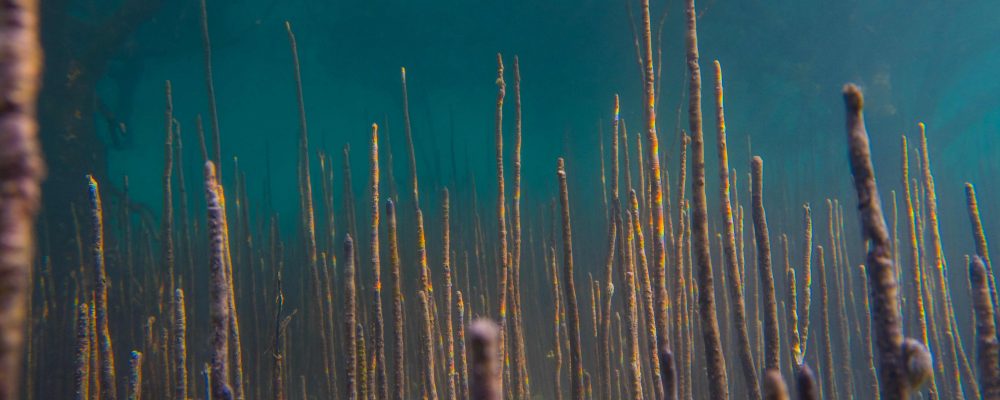The Arabian Peninsula is one of the most environmentally extreme regions in the world, yet is home to large and widespread stands of the gray mangrove (Avicennia marina), a unique mangrove species that is able to withstand extreme conditions. The gray mangrove forms the only naturally occurring evergreen forest in Arabia and supports high biodiversity and productivity in coastal areas across the region.
In a review article by researchers at the Center for Genomics and Systems Biology (CGSB) at NYU Abu Dhabi, the evolution of mangrove research in the Arabian region over the past half-century has been analyzed to determine geographic and topic-area trends, allowing identification of priority areas for future research.
In the article Evolution of mangrove research in an extreme environment: Historical trends and future opportunities in Arabia, published in the journal Ocean and Coastal Management, CGSB Postdoctoral Associate Guillermo Friis and Associate Professor of Biology at NYUAD John Burt reviewed 400 scientific publications that have been produced regionally since the first paper in 1955, and classified each into 11 major research topics, including studies from each of the regional seas. The goal was to identify trends and gaps in regional mangrove research, providing information essential to guiding future science and conservation programs.
The results demonstrate that there has been exponential growth in research on regional mangroves in recent decades. This growth in research has been attributed to local authors with a specific focus on human impact and ecology. The results have also highlighted the ecological importance of studying Arabian A. marina forests, as the area covered by gray mangroves is increasing across the Arabian region, unlike most tropical regions where mangroves are in decline. This is largely due to local afforestation and restoration programs as well as the development of protected areas in recent decades. The success of these programs can be applied to at-risk tree species in other areas of the world with varying climates.
This analysis also showed a deficit of research on gray mangroves in the Arabian Sea marine province, which is significant given that this area encompasses extensive gray mangrove forests in southwestern Iran, eastern UAE, and parts of Oman. These areas are considered to be under threat from development pressure and environmental pollutants caused by high human activity.
“This study provides the first literature-based analysis of the status and historical development of mangrove science in Arabia,” said Burt. “What we’ve created is a comprehensive assessment of the growing body of knowledge on regional mangroves, which can provide direction for future research and guide conservation, management and scientific study of these critical forest ecosystems.”






